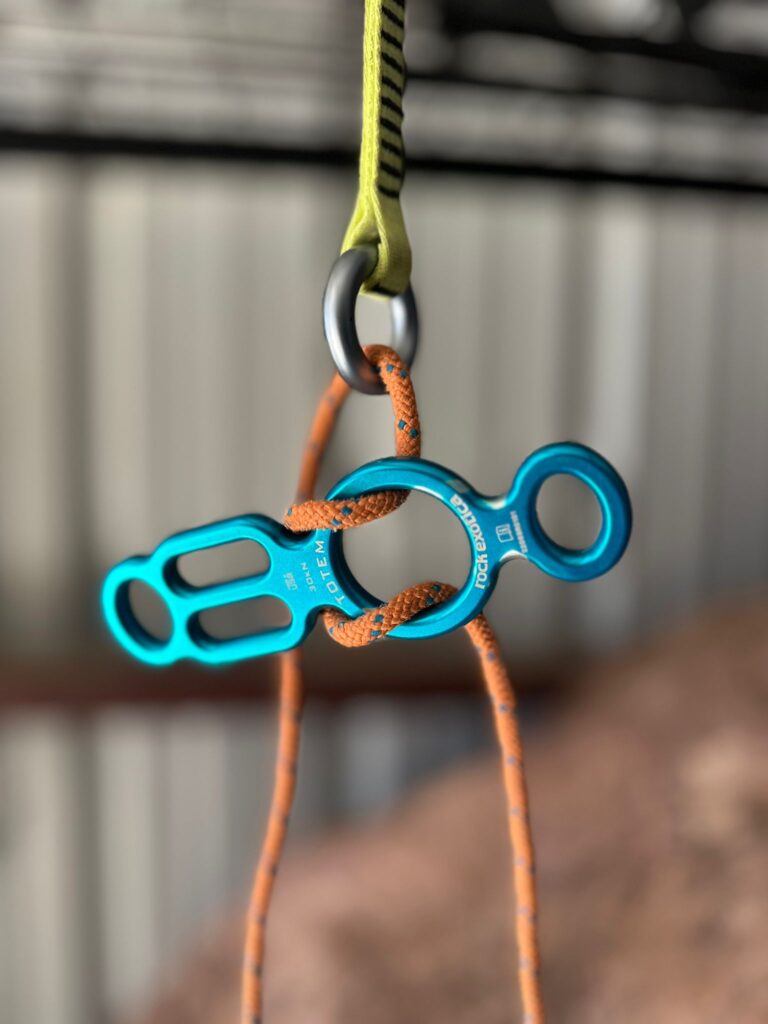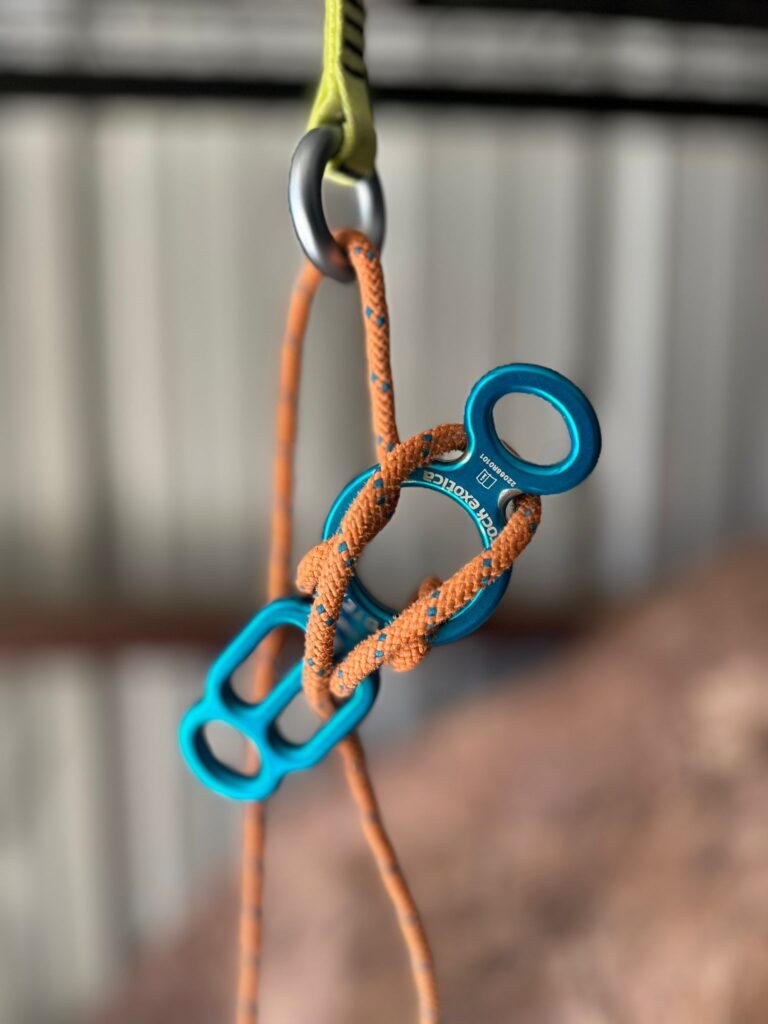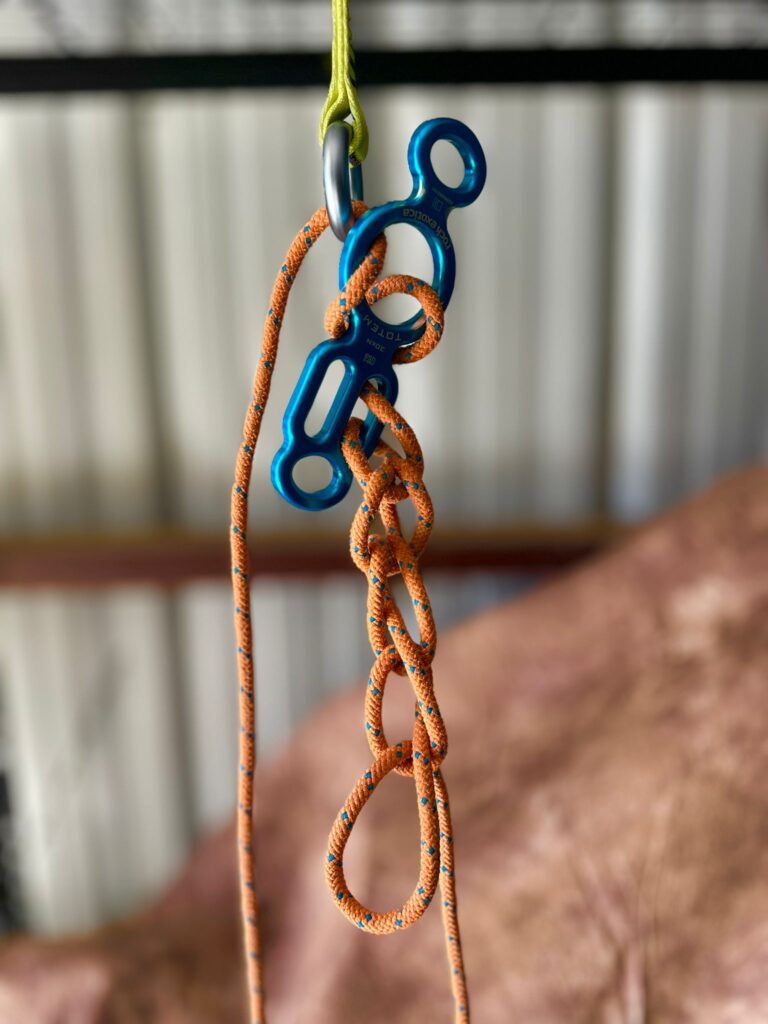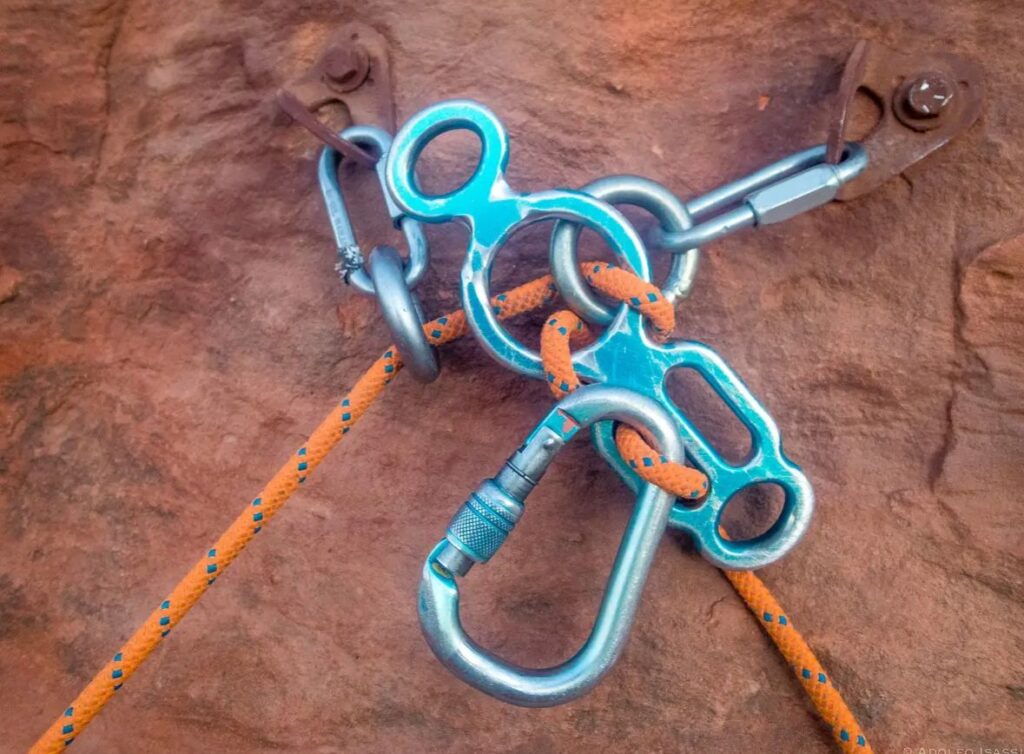Search by Keyword
Releasable Totem Block
Allll releasable contingency systems should have three parts.
- You need friction mechanism that will allow you to do a controlled lower if necessary.
- You need a way to secure the system so people can rappel, but it must be releasable under tension so you can get someone down who is hanging on the rope.
- The last thing you need is a safety. Ask your self what could possibly go wrong while someone is on the rope.
The Munter-Mule-Overhand (MMO) is the ubiquitous releasable contingency and the three parts are obvious. (1) the munter hitch will allow you to do a controlled lower; (2) the mule hitch secures the system, but can be released under tension like pulling out the bow on your shoe laces; and (3) tying an overhand not with the loop created by the mule hitch keeps it from being pulled out accidentally.
With releasable blocks, you still need the same three parts, but unlike the MMO, blocks can create another potential safety issue — stemming from the possibility that someone could rappel on the wrong strand of rope. So keep that in mind when you are asking yourself what you need to do for the safety in step #3.
The Totem block is similar to a normal figure eight block, but has one safety advantage starting with step #1. The rope is passed around the long end of the Totem, so the rope would have to travel a longer distance to come off.

Step #1 - Friction Mechanism
Friction is created by the rope passing around the long end of the Totem. Because it is a block, it is rigged on the “back” side of the rappel ring. In this photo, the rappel strand of the rope is on the left. The rope on the right is the brake strand.

Step #2a - Releasable Tie-Off
This is the original tie-off method for the Totem block. A bight of rope is pulled through one of the slots of the Totem, then passed over the short “neck” of the Totem.
Step #3 - Safety
With this tie-off method, ask yourself what could go wrong.
If the rope came off the “neck” of the Totem while someone is on the rappel side, the rope could slip. That issue could be addressed by clipping a carabiner into the small hole of the Totem and also on the brake strand to create a closed system.
If you are also concerned about someone rappelling on the wrong side, you could clip a quickdraw to the anchor and to the small hole of the Totem. Doing so would create a closed system AND secure the back side of the rope.

Step #2b - Releasable Tie-Off
This is the daisy chain tie-off method for the Totem block. A bight of rope is pulled through one of the slots of the Totem. That bight is used to start a daisy chain. One advantage of this method is having the brake strand in your hands and ready to lower immediately when the daisy chain is released.
Step #3 - Safety
With this tie-off method, ask yourself what could go wrong.
If the daisy chain was pulled accidentally while someone is on the rappel side, the rope could slip. That issue could be addressed by clipping a carabiner into the final loop of the daisychain and also on the brake strand.
If you are also concerned about someone rappelling on the wrong side, you could clip a quickdraw to the anchor and to the small hole of the Totem. Doing so would secure the back side of the rope.


Step #2c - Releasable Tie-Off
This is the autoblock method for the Totem block. A bight of rope is pulled through either the small hole or one of the slots of the Totem, then a carabiner is clipped into the bight.
Choosing between the small hole and one of the slots will depend primarily on the rope diameter.
In the event you need to lower someone, control the brake strand of rope with one hand and pull the carabiner away from the Totem to reduce the friction, which will allow lowering.
Step #3 - Safety
With this tie-off method, ask yourself what could go wrong.
If you are also concerned about someone rappelling on the wrong side, you could clip a quickdraw to the anchor and to the small hole of the Totem. Doing so would secure the back side of the rope.
